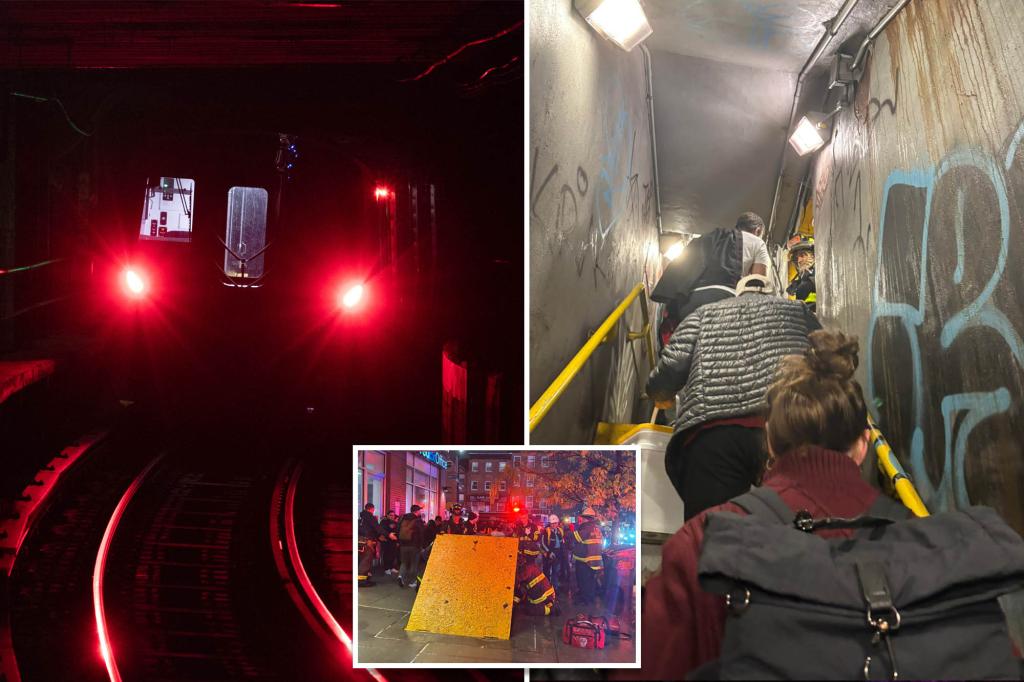The evening commute for approximately 3,500 New York City subway riders took a nightmarish turn on Wednesday when two F trains became stranded underground due to a power outage. The incident, which began around 5:30 p.m., left passengers trapped between the Jay Street/MetroTech and Hoyt-Schermerhorn stations in Brooklyn. With the trains immobilized and the air conditioning systems failing, the situation quickly deteriorated, transforming the normally mundane commute into an ordeal of heat, darkness, and uncertainty. Riders were stuck in the stifling tunnels for over two hours before rescue efforts could commence. The incident highlighted the vulnerabilities of the city’s subway system and the potential for even localized power failures to cause widespread disruption.
As time ticked by and temperatures rose within the confined train cars, a sense of unease spread amongst the trapped passengers. Social media platforms lit up with accounts of the unfolding crisis, with riders sharing photos and videos of the darkened tunnels and the arduous evacuation process. Images depicted passengers being led by firefighters through dimly lit tunnels and up steep, graffiti-covered service stairwells that emerged onto city sidewalks through trapdoors. The scene resembled something out of a disaster movie, with thousands of commuters forced to navigate unfamiliar and unsettling escape routes. The incident underscored the importance of emergency preparedness and the crucial role of first responders in managing such situations.
The evacuation process, though ultimately successful, was a logistical challenge. Firefighters worked diligently to lead the thousands of stranded passengers to safety. The arduous journey involved navigating dark tunnels and climbing steep staircases, a physically demanding task, particularly for the elderly, disabled, or those with young children. The prolonged time spent in the sweltering, stagnant air of the subway cars also took its toll on passengers, with some experiencing anxiety and discomfort. The incident served as a stark reminder of the potential risks associated with underground transit and the importance of effective communication and coordination during emergencies.
While the majority of passengers endured the ordeal with a mix of frustration and resilience, the incident brought to the forefront a range of human reactions to stressful situations. Some passengers reportedly experienced panic attacks or emotional distress, highlighting the psychological impact of such events. Others, however, displayed acts of kindness and camaraderie, sharing water, snacks, and words of encouragement. This mix of responses underscored the diverse ways individuals cope with unexpected adversity and the potential for community to emerge even in challenging circumstances.
The incident also exposed the delicate balance between the city’s power grid and its critical infrastructure. While the exact cause of the power outage remained under investigation, it was clear that even a localized disruption could have far-reaching consequences for the subway system. The incident prompted calls for a thorough review of the system’s vulnerability to power failures and the implementation of measures to mitigate future disruptions. The reliance of the subway on a reliable power supply was brought into sharp focus, highlighting the need for robust infrastructure and contingency plans.
In the aftermath of the ordeal, transit officials and Con Edison representatives pledged to work together to determine the cause of the outage and prevent similar incidents from occurring in the future. The incident served as a wake-up call, underscoring the importance of investing in infrastructure and ensuring the resilience of essential services. It also highlighted the need for effective communication and coordination between transit authorities and power providers to minimize disruptions and ensure the safety of passengers. The chaotic evening commute left a lasting impression on thousands of New Yorkers, serving as a stark reminder of the interconnectedness of urban systems and the importance of preparedness for unexpected events.










